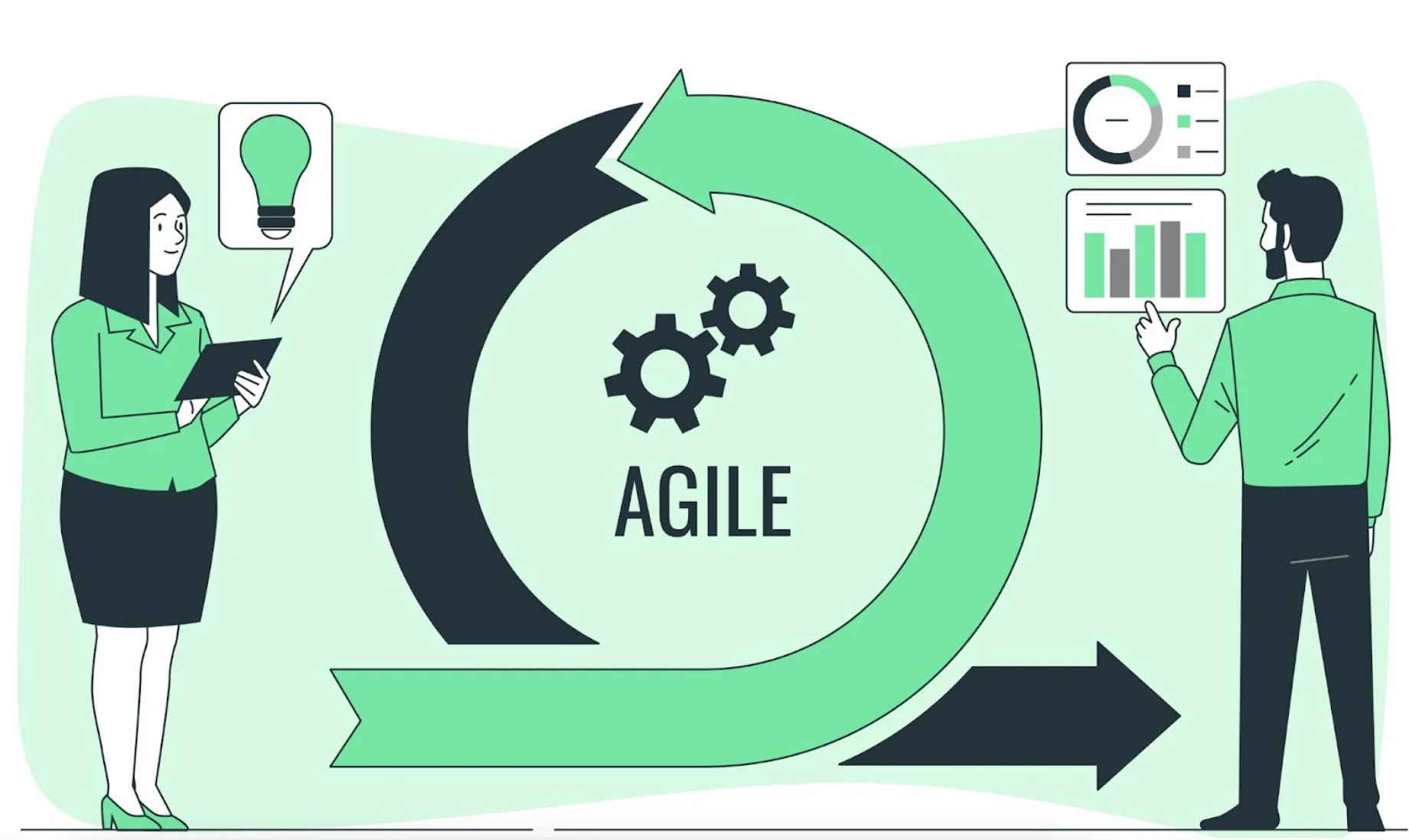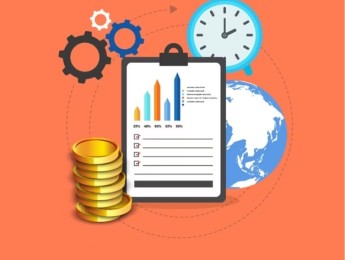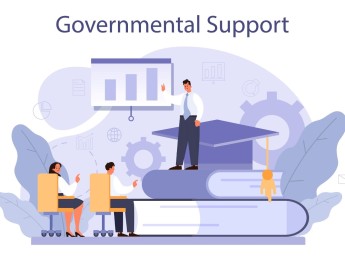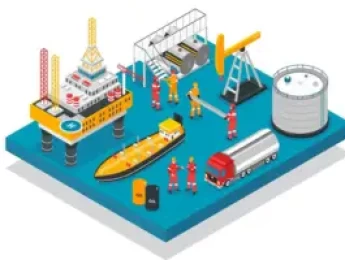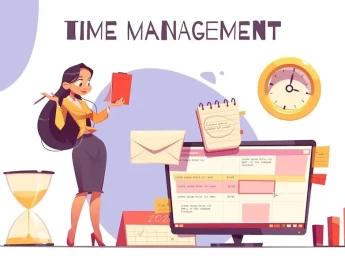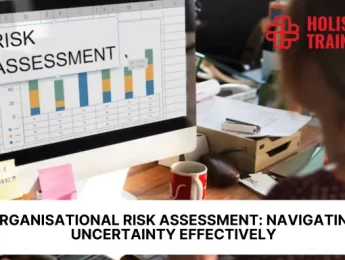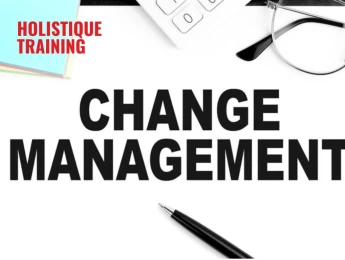- Table of Contents
- Introduction
- What is Kaizen? Where Does It Originally Come From?
- 10 Ways to Implement the Kaizen Methodology in Your Business
- Engage All Employees:
- Standardise Processes:
- Implement a Suggestion System:
- Conduct Regular Training:
- Focus on Small Changes:
- Utilise the PDCA Cycle:
- Establish Cross-Functional Teams:
- Create Visual Management Systems:
- Set Clear Goals and Metrics:
- Foster a Culture of Continuous Improvement:
- What Are the Benefits of Kaizen?
- Enhanced Productivity
- Improved Quality
- Increased Employee Engagement
- Cost Savings
- Greater Innovation
- Better Customer Satisfaction
- Sustainable Growth
- Statistics:
- What Is the PDCA Cycle and How Does It Relate to Kaizen?
- Plan:
- Do:
- Check:
- Act:
- The 5 Elements of Kaizen
- 1- Teamwork
- 2- Personal Discipline
- 3- Improved Morale
- 4- Quality Circles
- 5- Suggestions for Improvement
- 5 Main Tools of Kaizen
- 1. 5S System:
- 2. Value Stream Mapping (VSM):
- 3. Kaizen Blitz (Kaizen Event):
- 4. Root Cause Analysis (RCA):
- 5. Standardised Work:
- An Example of Kaizen
- Identify the Problem:
- Form a Cross-Functional Team:
- Implement Small Changes:
- Monitor and Adjust:
- Standardise and Scale:
- Conclusion
Introduction
Kaizen is more than just a methodology; it is a philosophy that can potentially transform businesses by instilling a culture of continuous improvement. This approach, originating from Japan, emphasises small, incremental changes that collectively lead to significant improvements over time. Let's delve into what Kaizen is, its origins, and how to effectively implement it in your business to reap its numerous benefits.
What is Kaizen? Where Does It Originally Come From?
Kaizen is a Japanese term that translates to "change for the better" or "continuous improvement." This philosophy is rooted in the belief that small, consistent changes can significantly improve efficiency, quality, and overall business performance. The origins of Kaizen can be traced back to post-World War II Japan. Masaaki Imai popularised the concept in his 1986 book "Kaizen: The Key to Japan's Competitive Success."
The development of Kaizen was heavily influenced by the management practices introduced by American experts such as W. Edwards Deming and Joseph Juran, who were invited to Japan to help rebuild its economy. These practices emphasised quality control and continuous improvement, which resonated deeply with Japanese companies. Over time, Kaizen became an integral part of Japanese business culture, contributing significantly to the success of companies like Toyota, which adopted and refined these principles into what is now known as the Toyota Production System (TPS).
10 Ways to Implement the Kaizen Methodology in Your Business
Implementing Kaizen requires a strategic approach that integrates its principles into the very fabric of your business operations. Here are ten detailed ways to bring the Kaizen methodology to life in your organisation:
Engage All Employees:
The success of Kaizen hinges on the active participation of all employees, from top executives to frontline workers. To foster this engagement:
- Communication: Regularly communicate the importance of continuous improvement to all employees. Meetings, newsletters, and intranet platforms keep everyone informed and motivated.
- Involvement: Create opportunities for employees to be directly involved in improvement initiatives. Form cross-functional teams where employees can collaborate on solving specific problems.
- Empowerment: Empower employees to take ownership of their work and suggest improvements. This can be achieved by providing the necessary tools, training, and authority to implement small changes.
Standardise Processes:
Standardisation is the foundation of Kaizen. It involves documenting and maintaining consistent procedures to ensure stability and reliability. To standardise processes:
- Documentation: Develop clear, step-by-step documentation for all key processes. Use flowcharts, checklists, and standard operating procedures (SOPs) to detail each step.
- Training: Train employees on the standardised processes to ensure everyone understands and follows them consistently.
- Review: Regularly review and update the standardised processes to reflect improvements and changes.
Implement a Suggestion System:
A structured suggestion system captures valuable insights and ideas from employees. To implement an effective suggestion system:
- Accessibility: Make the suggestion system easily accessible to all employees. This can be a physical suggestion box, an online portal, or a mobile app.
- Feedback Loop: Establish a feedback loop where each suggestion is acknowledged, reviewed, and responded to. This demonstrates that employee input is valued and taken seriously.
- Rewards: Introduce a rewards program to recognize and incentivize valuable suggestions. Rewards can range from simple recognition to monetary incentives or career advancement opportunities.
Conduct Regular Training:
Continuous training ensures that employees are equipped with the knowledge and skills needed to contribute to Kaizen initiatives. To facilitate effective training:
- Content: Develop training programs that cover Kaizen principles, tools, and techniques. Include practical examples and case studies to illustrate their application.
- Delivery: Use a variety of training methods, such as workshops, online courses, and on-the-job training, to accommodate different learning styles.
- Frequency: Schedule regular training sessions to reinforce learning and update employees on new practices and tools.
Focus on Small Changes:
Kaizen emphasises making small, incremental changes that accumulate to significant improvements over time. According to James Clear , if you enhance your performance by only 1% each day for an entire year, you’ll end up being 37 times more effective than when you began. To focus on small changes:
- Identification: Encourage employees to identify small, everyday issues and opportunities for improvement in their work areas.
- Implementation: Support the quick implementation of these small changes. Provide the necessary resources and authority for employees to make adjustments without lengthy approval processes.
- Measurement: Track the impact of these small changes to demonstrate their effectiveness and build momentum for further improvements.
Utilise the PDCA Cycle:
The Plan-Do-Check-Act (PDCA) cycle is a fundamental tool for structured problem-solving and continuous improvement. To effectively use the PDCA cycle:
- Plan: Clearly define the problem or area for improvement, set measurable objectives, and develop a detailed action plan.
- Do: Implement the plan on a small scale, ensuring all steps are followed as outlined.
- Check: Monitor and evaluate the results against the objectives. Use data and feedback to assess the effectiveness of the change.
- Act: Based on the evaluation, decide whether to standardise the improvement, make further adjustments, or abandon the change if it is not effective.
We will be delving deeper into each of these steps in a minute.
Establish Cross-Functional Teams:
Cross-functional teams bring together employees with diverse skills and perspectives to tackle complex problems. To establish effective cross-functional teams:
- Composition: Include members from different departments and levels within the organisation. Ensure the team has a balance of skills, knowledge, and experience.
- Goals: Set clear, achievable goals for the team to work towards. Provide the necessary resources and support to help them succeed.
- Collaboration: Foster a collaborative environment where team members feel comfortable sharing ideas and working together. Use team-building activities and regular meetings to strengthen relationships and communication.
Create Visual Management Systems:
Visual management tools make it easier to track progress and communicate information. To create effective visual management systems:
- Tools: To display key information and metrics, use tools like Kanban boards, dashboards, and visual control charts.
- Clarity: Ensure visual tools are clear, easy to understand, and accessible to all employees.
- Updates: Regularly update visual tools to reflect the latest data and progress. This keeps everyone informed and engaged.
Set Clear Goals and Metrics:
Clear goals and metrics provide direction and allow you to measure progress. To set effective goals and metrics:
- Alignment: Ensure that goals align with the overall business objectives and Kaizen principles.
- Specificity: Set specific, measurable, achievable, relevant, and time-bound (SMART) goals.
- Metrics: Identify key performance indicators (KPIs) that will be used to track progress. Regularly review these metrics to assess the effectiveness of improvement initiatives.
KPI | Description | Measurement Method |
Process Cycle Time | Time to complete a process cycle | Time tracking and process mapping |
Defect Rate | Frequency of defects in outputs | Quality inspections and defect logs |
Employee Engagement | Employee involvement and satisfaction | Surveys and participation rates |
Productivity | Output per unit of input | Output/input ratio analysis |
Cost Savings | Reduction in operational expenses | Financial analysis and cost tracking |
Table: KPIs of the Kaizen Methodology and How to Measure Them
Foster a Culture of Continuous Improvement:
Building a culture of continuous improvement requires consistent effort and reinforcement. To foster such a culture:
- Leadership: Demonstrate a commitment to Kaizen at all levels of leadership. Leaders should model continuous improvement behaviours and actively participate in Kaizen activities.
- Recognition: Recognize and celebrate successes, no matter how small. This reinforces the importance of continuous improvement and motivates employees to keep contributing.
- Communication: Keep the lines of communication open. Regularly share updates on improvement initiatives, success stories, and lessons learned to keep everyone engaged and informed.
By implementing these ten strategies, you can embed the Kaizen methodology into your business operations, leading to sustained improvements and long-term success. The journey of continuous improvement is ongoing, and with Kaizen, every small step taken contributes to a larger transformation.
What Are the Benefits of Kaizen?
The Kaizen methodology offers many benefits that can significantly enhance various aspects of a business. These advantages stem from its core principle of continuous improvement, leading to both immediate and long-term positive outcomes.
Enhanced Productivity
Kaizen focuses on streamlining processes and eliminating waste, which naturally leads to higher productivity. By continuously analysing and refining workflows, businesses can identify inefficiencies and bottlenecks, allowing them to implement small changes that make tasks quicker and more efficient. This incremental approach speeds up operations and encourages a proactive mindset among employees, who become more adept at spotting opportunities for improvement in their daily routines.
Improved Quality
One of the standout benefits of Kaizen is its impact on quality. By fostering a culture of continuous improvement, businesses can make frequent, minor adjustments that cumulatively enhance the quality of their products or services. These changes often involve refining processes, reducing errors, and increasing attention to detail. As a result, the overall standard of output is raised, leading to greater customer satisfaction and fewer defects or returns. This dedication to quality also helps build a strong customer reputation and trust.
Increased Employee Engagement
Kaizen empowers employees by involving them directly in the improvement process. When employees are encouraged to share their ideas and are given the authority to implement changes, they feel more ownership and responsibility toward their work. This active participation boosts morale, fosters a collaborative work environment, and leads to higher job satisfaction. Engaged employees are more motivated, productive, and loyal, contributing positively to the company’s success and reducing turnover rates.
Cost Savings
Kaizen can lead to substantial cost savings by continuously seeking ways to improve efficiency and eliminate waste. These savings come from various sources, such as reduced material waste, lower energy consumption, minimised rework, and more efficient use of time and resources. Focusing on making small, incremental changes also means that improvements can be implemented without significant capital investments, making Kaizen a cost-effective strategy for enhancing profitability.
Greater Innovation
Kaizen nurtures a culture where continuous improvement and innovation are integral to daily operations. This environment encourages employees to think creatively and explore new ways to solve problems and enhance processes. The regular practice of brainstorming and experimenting with small changes fosters an innovative mindset, leading to the development of novel solutions and improvements that can provide a competitive edge. Over time, this culture of innovation can lead to significant advancements and breakthroughs in products, services, and business practices.
Better Customer Satisfaction
Improved quality, efficiency, and employee engagement directly translate to better customer experiences. When products and services meet or exceed customer expectations, satisfaction levels rise, leading to increased customer loyalty and positive word-of-mouth referrals. The continuous refinement of processes also means that businesses can respond more swiftly to customer feedback and changing market demands, further enhancing customer satisfaction and retention.
Sustainable Growth
Kaizen’s incremental approach to improvement ensures that changes are sustainable over the long term. Businesses can maintain stability while steadily progressing by making small, manageable adjustments rather than large, disruptive overhauls. This sustainability is crucial for long-term growth, as it allows companies to adapt to evolving market conditions, technological advancements, and customer preferences without experiencing significant setbacks. The continuous cycle of improvement embedded in Kaizen creates a solid foundation for enduring success and growth.
In summary, Kaizen provides a comprehensive framework for driving continuous improvement across all facets of a business. By enhancing productivity, quality, employee engagement, cost-efficiency, innovation, customer satisfaction, and sustainable growth, Kaizen equips businesses with the tools and mindset needed to thrive in a competitive landscape. Embracing Kaizen means committing to a journey of perpetual betterment, where every small step forward contributes to a more efficient, effective, and resilient organisation.
Statistics:
A study found that the primary outcomes of implementing Kaizen include meeting increased market demand without the need for new facilities and enhancing efficiency while reducing the number of employees needed by 27%.
What Is the PDCA Cycle and How Does It Relate to Kaizen?
The Plan-Do-Check-Act (PDCA) Cycle is a crucial component of the Kaizen methodology, serving as a structured framework for problem-solving and continuous improvement. Originating from the quality control processes advocated by Dr. W. Edwards Deming , the PDCA Cycle is also known as the Deming Cycle or Shewhart Cycle. It is a simple yet powerful iterative process that helps organisations achieve systematic and sustainable improvements.
Plan:
The first step of the PDCA Cycle is planning. This stage involves identifying a specific problem or area for improvement, setting clear objectives, and developing a detailed action plan to address the issue. Planning requires a thorough analysis of the current situation to understand the root causes of the problem. Tools such as root cause analysis, process mapping, and brainstorming sessions can be used to gather data and insights. The plan should outline the steps needed to achieve the desired change, assign responsibilities, and define the resources and timelines required. By carefully planning, businesses can ensure that improvements are strategically targeted and well-prepared.
Do:
The second step, "Do," involves implementing the action plan on a small scale to test its effectiveness. This controlled execution helps minimise risks and allows for close monitoring of the process. During this phase, it is crucial to document any deviations from the plan and collect data on the results. The "Do" stage is a pilot test, providing valuable insights into how the proposed changes work in practice. This hands-on approach enables businesses to identify any unforeseen issues or challenges and make necessary adjustments before full-scale implementation.
Check:
In the third step, "Check," the focus is on evaluating the implementation results. This involves comparing the outcomes against the objectives set in the planning stage to determine whether the changes have achieved the desired effects. Data collected during the "Do" phase is analysed to assess performance, identify trends, and measure improvements. If the results do not meet expectations, this stage provides an opportunity to investigate why and refine the plan. The "Check" phase ensures that decisions are based on evidence and that improvements are verified before moving forward.
Act:
The final step, "Act," involves taking action based on the findings from the "Check" phase. If the implementation is successful and the objectives are met, the changes are standardised and integrated into regular operations. This might include updating standard operating procedures (SOPs), providing additional training, and communicating the changes to all relevant stakeholders. If the results are unsatisfactory, the "Act" phase involves revising the plan and repeating the PDCA Cycle. This iterative approach allows for continuous refinement and enhancement of processes, fostering a culture of ongoing improvement.
The PDCA Cycle is intrinsically linked to the Kaizen philosophy, as it embodies the essence of continuous improvement through incremental changes. Kaizen encourages businesses to adopt a mindset of perpetual betterment, where small, consistent adjustments lead to significant long-term benefits. The PDCA Cycle provides a structured method to achieve this by breaking down improvements into manageable steps.
In Kaizen, the PDCA Cycle addresses issues and systematically implements changes. Each cycle builds on the previous one, creating a loop of continuous feedback and refinement. This iterative process ensures that improvements are data-driven and sustainable. By regularly cycling through PDCA, businesses can maintain a steady pace of progress, adapt to changing conditions, and prevent complacency.
Moreover, the PDCA Cycle aligns with the collaborative and inclusive nature of Kaizen. It encourages the involvement of employees at all levels in the improvement process. During the planning stage, input from frontline workers who are directly involved in the processes being improved is invaluable. Their insights and suggestions contribute to more effective and practical plans. The "Do" phase often involves cross-functional teams working together to implement changes, fostering teamwork and shared responsibility.
The "Check" phase emphasises accountability and transparency, as results are openly reviewed and analysed. This stage also provides recognition and learning opportunities, where successes are celebrated, and lessons are identified for future cycles. The "Act" phase reinforces the commitment to continuous improvement by ensuring that successful changes are embedded into the organisation’s practices and that any shortcomings are addressed through further cycles.
The PDCA Cycle operationalizes the Kaizen principle of continuous improvement by providing a repeatable framework for achieving and sustaining better performance. It helps businesses navigate the journey of improvement methodically, ensuring that each step is purposeful and contributes to the overall goal of excellence. By embracing the PDCA Cycle, organisations can create a dynamic and resilient environment where improvements are constantly pursued, implemented, and refined. This ongoing commitment to betterment enhances operational efficiency and quality and cultivates a culture of innovation and engagement, driving long-term success.
The 5 Elements of Kaizen
Kaizen is built upon five fundamental elements that collectively support its philosophy of continuous improvement. These elements serve as the pillars of the Kaizen methodology, ensuring that its principles are effectively integrated into the organisational culture and operations.
1- Teamwork
At the heart of Kaizen is the principle of teamwork. Successful implementation of Kaizen relies on the collective effort of all employees working together towards common goals. Teamwork fosters collaboration, encourages the sharing of ideas, and leverages employees' diverse skills and perspectives. In a Kaizen environment, cross-functional teams are often formed to tackle specific problems or improvement projects. These teams bring together individuals from different departments and levels within the organisation, promoting a holistic approach to problem-solving. Regular team meetings, brainstorming sessions, and workshops are used to facilitate open communication and ensure that everyone’s input is valued. By working together, teams can identify more comprehensive and innovative solutions, leading to more effective and sustainable improvements.
2- Personal Discipline
Personal discipline is a crucial element of Kaizen, as it emphasises the responsibility of each individual to maintain high standards in their work. This includes adhering to established processes, punctuality, maintaining a clean and organised workspace, and consistently striving for excellence. Personal discipline ensures that employees are accountable for their actions and take ownership of their work. In a Kaizen-driven organisation, employees are encouraged to take pride in their contributions and seek ways to continuously improve their performance. This element also involves a commitment to self-improvement and ongoing learning. By cultivating personal discipline, organisations can create a motivated, reliable, and dedicated workforce to continuous improvement.
3- Improved Morale
Improved morale is both a benefit and an essential element of Kaizen. When employees are actively involved in improvement initiatives and their contributions are recognized, they experience a greater sense of purpose and job satisfaction. This morale boost translates into higher engagement, motivation, and productivity. Kaizen creates an environment where employees feel valued and empowered to make a difference. Regular feedback, positive reinforcement, and celebrations of success contribute to a positive work culture. Improved morale also leads to better teamwork and collaboration, as employees are more likely to support one another and work together towards shared goals. Organisations can foster a supportive and dynamic workplace that drives continuous improvement by focusing on improving morale.
4- Quality Circles
Quality circles are small groups of employees who regularly meet to discuss and solve work-related problems. These circles practically apply the teamwork element of teamwork and are integral to the Kaizen methodology. Quality circles typically consist of employees from the same work area or department with first-hand knowledge of the processes and challenges involved. Members identify problems, analyse root causes, and develop solutions during their meetings. They then implement these solutions and monitor their effectiveness. Quality circles provide a structured yet flexible forum for employees to engage in continuous improvement actively. Quality circles enhance their skills, knowledge, and sense of ownership by empowering employees to take charge of problem-solving. This approach leads to better solutions and reinforces a culture of continuous learning and improvement.
5- Suggestions for Improvement
A formal system for collecting and implementing employee suggestions is a cornerstone of Kaizen. This element ensures that valuable insights and ideas from employees are captured and acted upon. The suggestion system can take various forms, such as suggestion boxes, digital platforms, or regular meetings dedicated to brainstorming. To be effective, the system must be accessible to all employees and include a clear process for submitting, reviewing, and responding to suggestions. Recognizing and rewarding useful suggestions is crucial to maintaining a steady flow of ideas and encouraging ongoing participation. By actively seeking and implementing employee suggestions, organisations can tap into a wealth of knowledge and creativity that might otherwise go unnoticed. This element also reinforces the message that every employee’s input is valuable and continuous improvement is a shared responsibility.
In summary, the five elements of Kaizen—teamwork, personal discipline, improved morale, quality circles, and suggestions for improvement—form a cohesive framework that supports the continuous improvement philosophy. By integrating these elements into their operations and culture, organisations can create an environment where employees are motivated, engaged, and committed to making ongoing enhancements. This holistic approach drives operational excellence and fosters a positive and dynamic workplace that can adapt and thrive in a constantly changing business landscape.
5 Main Tools of Kaizen
Implementing Kaizen principles is supported by various tools that help streamline processes, identify areas for improvement, and facilitate effective problem-solving. These tools are designed to be simple yet powerful, enabling organisations to enhance their operations continuously. Here are five main tools of Kaizen and how they contribute to continuous improvement:
1. 5S System:
The 5S System is a foundational tool in the Kaizen methodology. It aims to create and maintain an organized, clean, and efficient workplace. The 5S stands for Sort, Set in Order, Shine, Standardise, and Sustain.
- Sort (Seiri): This step involves removing unnecessary items from the workspace. By sorting through tools, materials, and equipment, employees can eliminate clutter and ensure that only essential items remain, reducing waste and improving efficiency.
- Set in Order (Seiton): Once unnecessary items are removed, the remaining items must be organized systematically. This involves logically arranging tools and materials to minimise search time and enhance workflow. Labelling and creating specific storage spaces are common practices in this step.
- Shine (Seiso): This step emphasizes regular workspace cleaning and maintenance. Keeping the work area clean prevents deterioration, reduces the risk of accidents, and promotes a sense of pride and ownership among employees.
- Standardise (Seiketsu): Standardising best practices ensures that the first three S's are consistently applied. This involves creating standard operating procedures (SOPs), checklists, and visual management tools to maintain organisation and cleanliness.
- Sustain (Shitsuke): The final step focuses on sustaining the improvements made through regular audits, training, and reinforcement. It involves cultivating a culture of discipline and continuous improvement to ensure that 5S practices become ingrained in daily operations.
The 5S System enhances efficiency and productivity and establishes a stable and well-organised work environment, laying the groundwork for other Kaizen activities.
2. Value Stream Mapping (VSM):
Value Stream Mapping (VSM) is a visual tool for analysing and optimising the flow of materials and information required to deliver a product or service. It helps identify waste, bottlenecks, and areas for improvement in the process.
- Current State Map: The first step in VSM is to map the process's current state. This involves documenting each step, the flow of materials and information, and the time taken at each stage. Organisations can identify inefficiencies and areas where value is not being added by visualising the entire process.
- Future State Map: After analysing the current state, the next step is to design a future state map that eliminates waste and improves efficiency. This involves reconfiguring processes, reducing waiting times, and optimising the flow of materials and information.
- Implementation Plan: The final step is to develop an implementation plan to transition from the current state to the future state. This plan outlines the actions needed, assigns responsibilities and sets timelines for achieving the desired improvements.
Value Stream Mapping is a powerful tool for identifying opportunities to streamline processes, reduce lead times, and enhance overall efficiency. By focusing on value-adding activities and eliminating waste, VSM helps organisations deliver higher quality products and services more efficiently.
3. Kaizen Blitz (Kaizen Event):
A Kaizen Blitz, also known as a Kaizen Event, is an intensive, short-term project to improve a specific process or area rapidly. These events typically last from a few days to a week and involve cross-functional teams working collaboratively to achieve significant improvements.
- Preparation: The preparation phase involves defining the scope of the Kaizen Blitz, selecting team members, gathering data, and setting clear objectives. Ensuring that the team is well-prepared and all necessary resources are available is crucial.
- Execution: During the Kaizen Blitz, the team works intensively to analyse the current process, identify problems, and develop solutions. This phase involves brainstorming, root cause analysis, and rapid experimentation. The team implements changes on the spot and tests their effectiveness.
- Follow-Up: It is important to follow up on the changes implemented after the event to ensure they are sustained and further refined if needed. This phase includes monitoring the impact of the improvements, standardising successful practices, and addressing any new issues that arise.
Kaizen Blitz events are highly effective for achieving quick wins and demonstrating the power of Kaizen principles. They engage employees, foster teamwork, and build momentum for continuous improvement initiatives.
4. Root Cause Analysis (RCA):
Root Cause Analysis (RCA) is a problem-solving tool used to identify the underlying causes of a problem rather than addressing its symptoms. By understanding the root causes, organisations can implement effective and lasting solutions.
- Define the Problem: The first step in RCA is clearly defining the problem and its impact. This involves gathering data, documenting the issue, and understanding its context.
- Collect Data: Collecting data helps to understand the problem’s extent and patterns. This may involve reviewing process documentation, interviewing employees, and analysing relevant metrics.
- Identify Possible Causes: The next step is to brainstorm and identify all possible causes of the problem. Tools like the Fishbone Diagram (Ishikawa Diagram) or the 5 Whys technique are commonly used to explore different potential causes.
- Analyse the Causes: After identifying possible causes, the team analyses them to determine the root cause. This involves examining the relationships between different factors and verifying assumptions through data and evidence.
- Implement Solutions: Once the root cause is identified, the team develops and implements solutions to address it. This may involve changing processes, providing training, or making other adjustments to prevent the problem from recurring.
Root Cause Analysis is essential for effectively addressing problems and preventing their recurrence. By focusing on the root causes, organisations can implement solutions that lead to sustained improvements and enhanced performance.
5. Standardised Work:
Standardised Work is a tool that involves documenting the best practices for performing tasks and ensuring that these practices are consistently followed. It provides a clear and detailed description of how work should be done to achieve the highest level of efficiency and quality.
- Documentation: The first step in Standardised Work is to document the current best practices for each task. This involves detailing the steps, sequences, and timing required to complete the work efficiently. Visual aids such as diagrams and photographs can enhance the clarity of the documentation.
- Training: Training employees to follow these standards is essential once the best practices are documented. Training ensures that everyone understands the correct procedures and can perform tasks consistently.
- Monitoring: Regular monitoring and audits are necessary to ensure that standardised work is followed consistently. This involves observing work processes, collecting data, and addressing deviations from the standards.
- Continuous Improvement: Standardised Work is not static; it should be continuously reviewed and updated based on feedback and new insights. Employees should be encouraged to suggest improvements to the standards, ensuring they remain relevant and effective.
Standardised Work ensures consistency, reduces variability, and improves efficiency. Providing a clear framework for performing tasks, it helps maintain high standards of quality and enables continuous improvement.
In conclusion, the 5S System, Value Stream Mapping, Kaizen Blitz, Root Cause Analysis, and Standardised Work are essential tools that support the Kaizen methodology. Each tool plays a unique role in identifying opportunities for improvement, implementing changes, and sustaining progress. By integrating these tools into their operations, organisations can create a dynamic and efficient environment where continuous improvement thrives. These tools enhance operational efficiency and quality and foster a culture of innovation and collaboration, driving long-term success.
An Example of Kaizen
Consider a manufacturing company facing delays and quality issues in its production line. By applying Kaizen principles, the company decides to implement the following steps:
Identify the Problem:
The company uses Value Stream Mapping to identify bottlenecks and areas of waste in the production process.
Form a Cross-Functional Team:
A team of employees from different departments is assembled to brainstorm solutions and develop an improvement plan.
Implement Small Changes:
The team decides to rearrange the layout of the production floor to reduce movement and improve workflow. They also introduced a 5S system to organise the workspace and implemented a Kanban system to manage inventory better.
Monitor and Adjust:
Using the PDCA cycle, the team monitors the impact of these changes. They find that the new layout reduces production time by 15%, and the 5S system significantly decreases the time spent searching for tools and materials.
Standardise and Scale:
With positive results from the initial changes, the company standardises the new layout and processes across all production lines. Continuous feedback and suggestions from employees lead to further refinements and improvements.
As a result of these Kaizen initiatives, the company experiences a significant boost in productivity, quality, and employee satisfaction. The small, incremental changes collectively lead to a major transformation in the company's operations.
Conclusion
Applying the principle of Kaizen in your business can lead to transformative results by fostering a culture of continuous improvement. From engaging employees at all levels to utilizing powerful tools like the PDCA cycle, the 5S system, and Kanban, Kaizen provides a comprehensive framework for achieving lasting improvements. By embracing Kaizen, businesses can enhance productivity, improve quality, increase employee engagement, and drive sustainable growth. Start small, involve everyone, and let the philosophy of Kaizen guide your journey toward excellence.
To further hone your skills and knowledge, consider enrolling in our course, "Benchmarking Your Performance & Making Continuous Improvements." This course will equip you with advanced techniques and practical strategies to elevate your business performance and sustain long-term success. Take the next step in your Kaizen journey and unlock your full potential.


